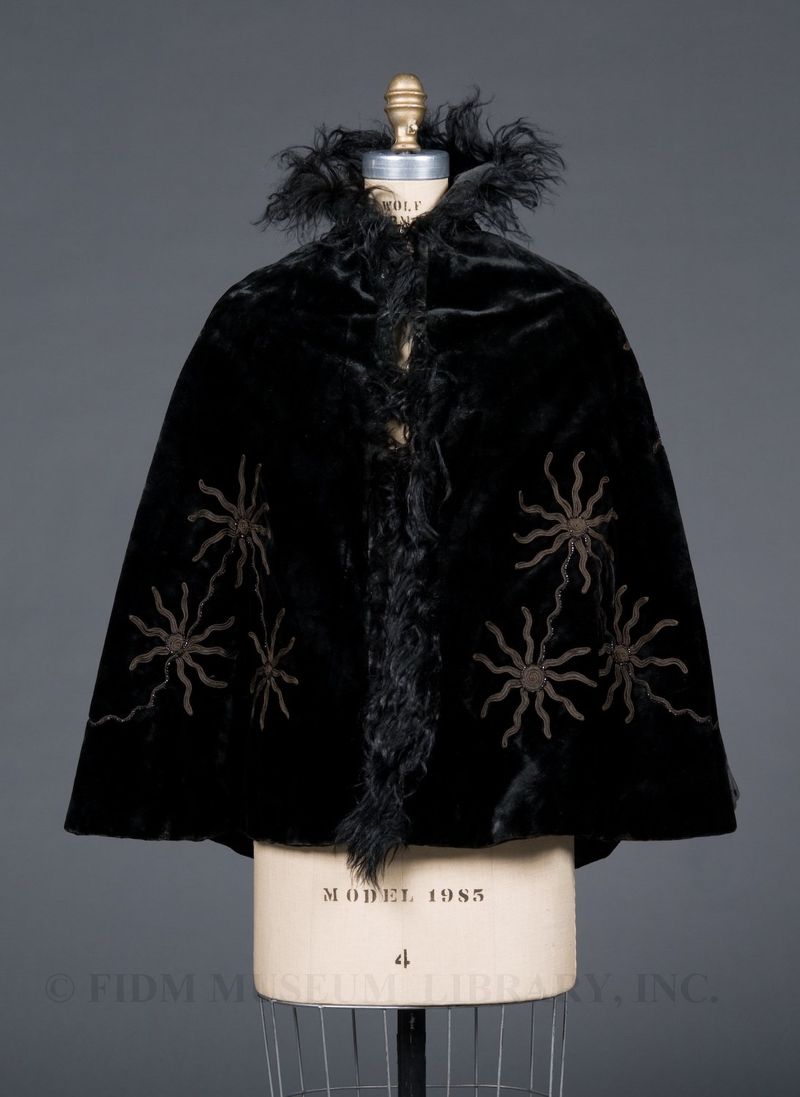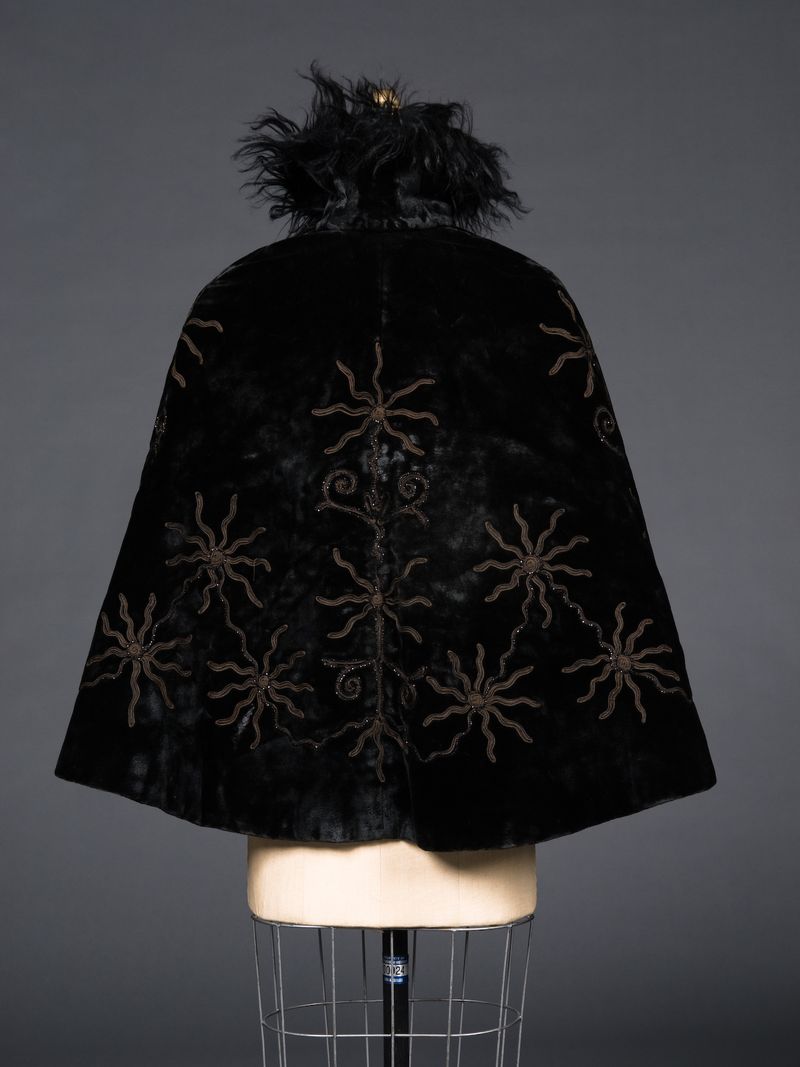 Cabinet card
Cabinet card
1896-1898
Give of Steven Porterfield
2009.897.27
Whoa! What happened to this cabinet card?!? Browsing through our collections management database, I was struck by the unusual orientation of this image, not to mention the sitter's striking hat and cape. I checked with our resident photography expert and she informed me that novelty photo presentations were quite common by the late 1890s. Then, as now, savvy businesspeople used novelty to beguile their customers. A photo with this orientation would have been displayed in a photo album or in a diamond shaped frame. The relatively large size of a cabinet card, usually 4 ½” by 7”, meant that facial features and other details were easily distinguishable from a distance. This made them popular for table-top or wall display, though they were also stored in family albums.
Though the unusual orientation is striking, the sitter's hat and short cape are also memorable. By the middle of the 1890s, hats were substantial creations trimmed with a variety of feathers, ribbon, flowers or other decorative elements. Large hats were believed to complement and balance the full sleeves popular throughout much of the decade. The flat brim of the hat pictured above is trimmed with a cascade of ostrich feathers.
The sitter's face is framed by the standing collar of her short, fur capelet. Two types of fur were incorporated into her cape: naturally curly astrakhan and a denser fur, possibly beaver. Beginning in about 1893, as sleeves began growing larger, capes replaced coats as the most popular type of outerwear. As noted by a Ladies' Home Journal writer in 1895, "When Dame Fashion announced that very large hats and full sleeves would be worn it was a foregone conclusion that capes would remain in favor."1 The author went on to describe the difficulty of forcing an extremely full gigot or leg o' mutton sleeve into the narrow cuff of a jacket. Given the popularity of full sleeves, capes were simply easier to put-on and take-off.
 Cape
Cape
c. 1900
Gift of Ellie, Stephen and Christina Johnson
2007.921.1
One of the most popular styles of cape was the round cape, so-called because it was essentially a circle with an opening. Longer than the fur capelet pictured in the cabinet card above, the round cape of the later 1890s was about 2 feet long and would usually hit at the wearer's waist. Perhaps because they were so popular, there are many extant examples of black velvet round capes in museum collections. They are often embellished with meandering bead, embroidery or applique patterns. Our example features star motifs created with appliqued black-brown braid and beads. The collar and center front closure are embellished with curly goat hair. The cape is lined with black sateen and features two hidden interior pockets.
The interior label reveals some interesting information about this cape. It is definitely made of black velvet, but the label boasts "that this garment is made of the celebrated Salt's Seal Plush." Perhaps The Salt's Company called their velvet "seal plush" to increase its appeal to consumers in an era when fur was a highly valued commodity.
1 Mallon, Isabel A. "Early Spring Wraps." The Ladies' Home Journal. March 1895: 17.



More info on seal plush: http://www.ehow.com/about_6652898_seal-plush-coat_.html. Thanks to blog reader Cathy for the tip!
I love capes and hats and I’ve never looked good in either. Sigh. Dreamy. Love that star embroidery.